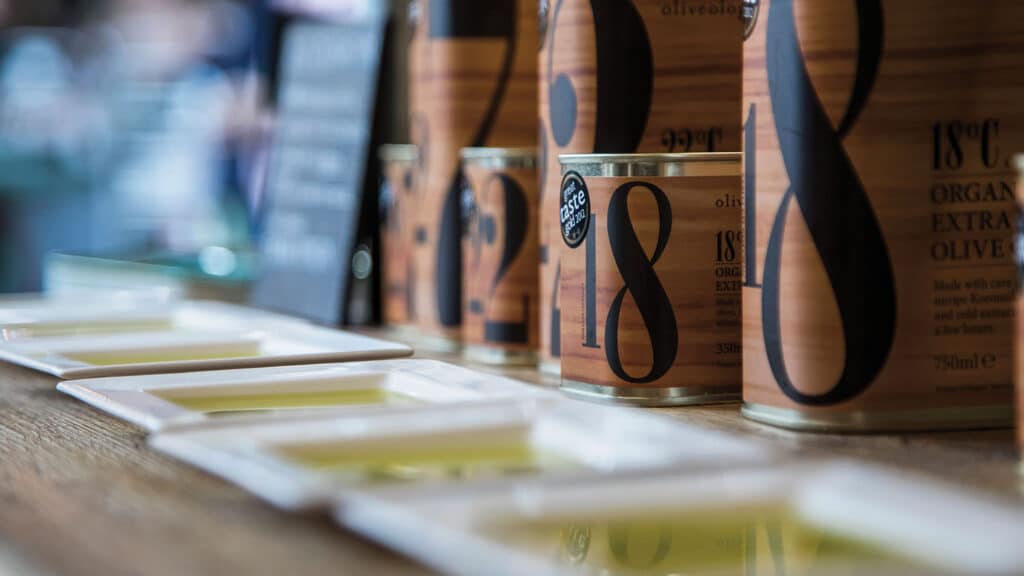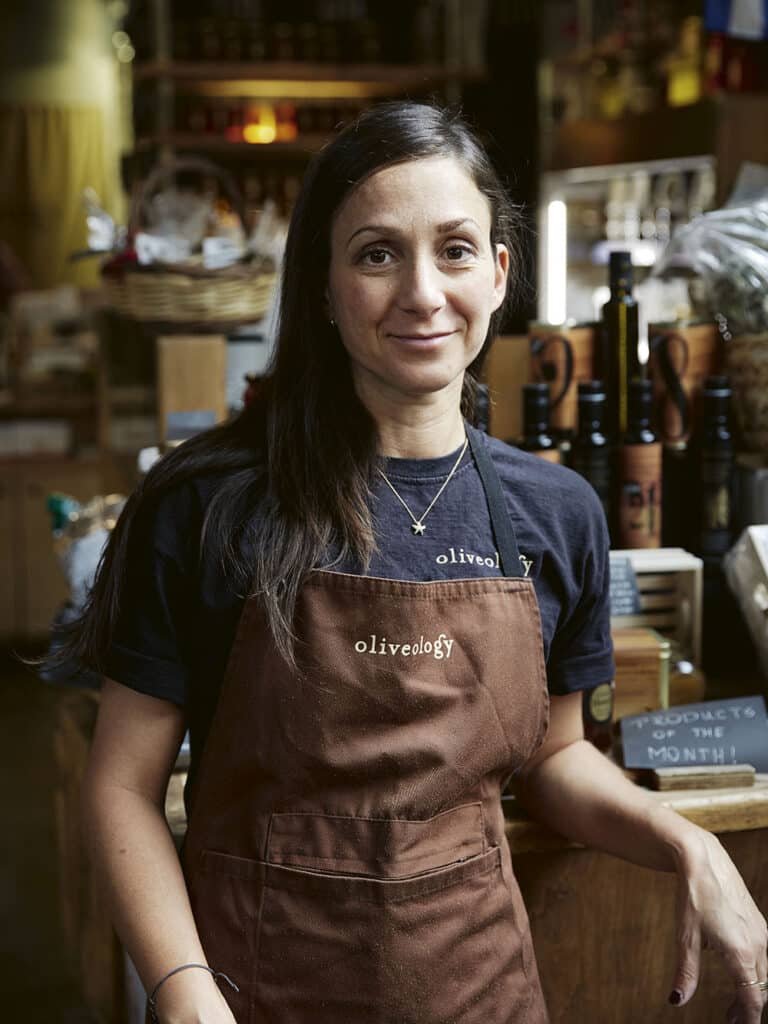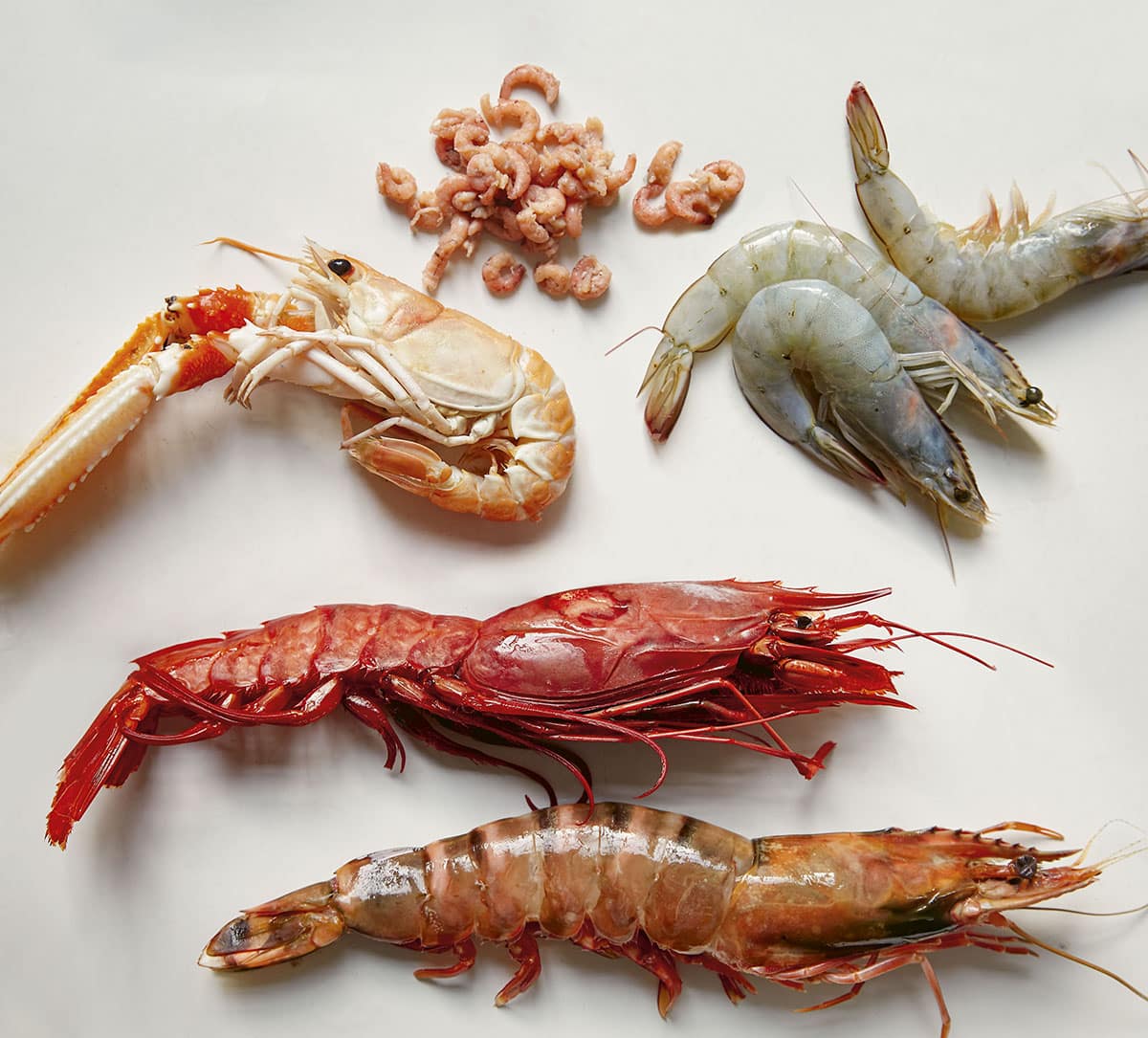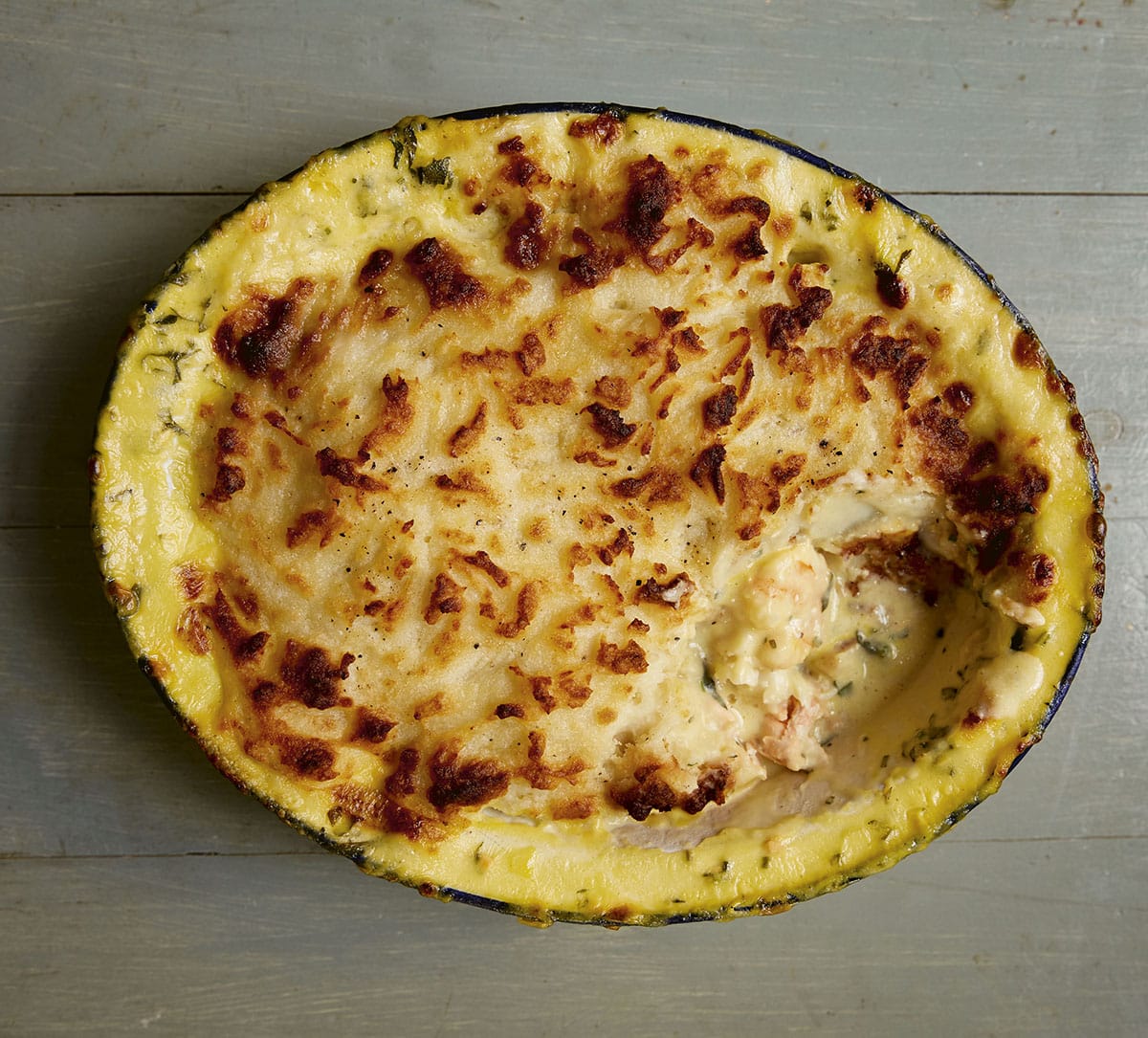Understanding olive oil
In an extract from Borough Market: The Knowledge, Marianna Kolokotroni of Oliveology provides her expert guide to extra virgin olive oil


“THE MORE PLACES THE OLIVES HAVE COME FROM, THE LESS ASSURED YOU CAN BE OF THE OIL’S QUALITY”
Portrait: Kim Lightbody
Though today home to a host of Greek speciality foods, Oliveology began, as the name suggests, with olive oil, grown and pressed by traditional, organic family farms on a part of the Peloponnese peninsula that has been cultivating olives for over 3,000 years.
The best way to understand olive oil is to view it in the same way you would wine. Like wine, there are many different olive oils from numerous different regions – and, like wine, there are many factors that will affect the price and quality. The scale of production is one; if the plantation is large, and most of the harvesting and processing is done by machinery, the olive oil will be cheaper. One reason that olive oil from Greece is rarely cheap is because Greece is so mountainous; you inevitably have no choice but to harvest at least some of the olives by hand.
Another factor to consider is whether you’re buying a single-variety olive oil or a blend. If the oil is produced from a single variety of olives from a single plantation, you can – again, like wine – really taste the terroir. Some producers blend two or three different types of olives, gathered from estates that don’t grow enough olives to make their own oil. This can produce a good result, but blends are often used to hide faults in a particular harvest.

The more places the olives have come from, the less assured you can be of its quality. Kalamata olive oil will be a blend of olives from across the Kalamata region of Greece; Greek olive oil will be a blend from across Greece; European olive oil will be a blend from multiple countries. Our olive oil is a single variety, the Koroneiki variety, from a single estate in Sparta, Greece.
Of course, the main thing affecting the quality of the oil is the quality of the olives themselves. If you use pesticides and fertilisers on the crop, the quality will inevitably be affected, because these chemicals make their way into the harvest – you can’t wash them away if they’ve been applied from the start. But growing organically is becoming a lot more challenging because changes in climate have resulted in more diseases, pests and extreme weather events.
Then there is harvesting. On commercial plantations, they let the olives fall to the ground. This makes them easier to collect but can result in some olives being bruised or rotting slightly. The longer the olives are left, the worse this will be. Even for extra-virgin olive oil, you can allow up to 48 hours between harvesting and pressing. If those damaged olives go through the press, they will affect the result. Our producers pick the olives rather than allowing them to fall, then transport them to the press in less than two hours. Before pressing, they discard any that are defective; last year they had to discard 30–40 per cent. They would rather suffer that loss than damage their reputation.
Finally, there is the processing of the olives into olive oil. For an oil to be extra-virgin, the producer must cold-press the olives, meaning the temperature at which the oil is extracted is no more than 27C. At higher temperatures, the olives start to cook, the acidity of the oil increases, and the flavour and nutritional benefits deteriorate. Cold-pressing results in less yield, so you need to use more olives, but the lower the temperature, the higher the quality of oil. Each of our oils is labelled with a large number, which refers to the temperature of extraction. We’re keen to teach people why this is relevant.
Any olive oil that is not labelled ‘extra-virgin’ will have been extracted at a higher temperature and made with poor-quality olives. ‘Virgin’ and other low-grade oils are simply a way of selling off bad olives. Sometimes people think they have a higher smoke point so are better for cooking, but that’s not true: extra-virgin olive oil has the highest smoke point of any type of olive oil. It’s also a bad way of thinking about it, in my opinion. You’re still eating it, you’re still putting it in your body.
Another common impression is that greener olive oil is fresher and better – in fact, some manufacturers add green colouring because of this perception – but the colour of olive oil is not a guarantee of its quality. Olive oils that are unfiltered and cloudy are good to buy if you are going to use them quickly, but the sediment means they will deteriorate much faster. Our olive oil goes through a simple, natural filtration process – it is left in a metal tank until the sediment settles to the bottom.
I usually recommend that people go around Borough Market, try different olive oils from different stalls, and see which flavours they prefer. There are olive oils from Croatia, Spain, Italy – and Greece, of course. They are spicy, or bitter, or vibrant, or subtle. I don’t believe there is a ‘best’ olive oil, in the same way that there isn’t a ‘best’ wine. It is totally subjective.
From Borough Market: The Knowledge with Angela Clutton (Hodder & Stoughton 2022)
Discover more


